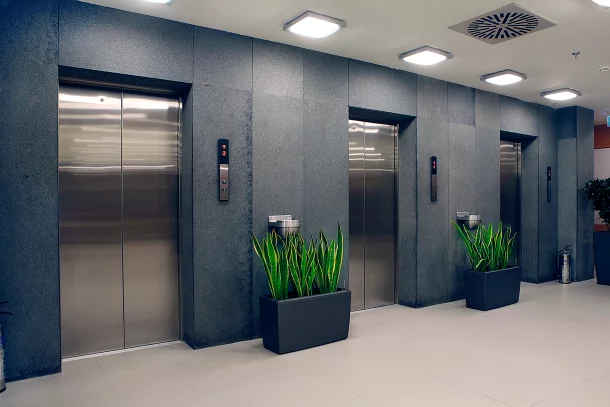We Maintain Lifts with Precision: Ensuring Safety and Performance
Wiki Article
Digging Into the World of Elevators: Typical Issues Dealt With by Different Lift Mechanisms
As we navigate with the upright transport systems of contemporary structures, lifts stand out as an important part of our daily lives. From hydraulic elevators to traction systems and machine-room-less styles, each lift kind comes with its collection of common problems.Hydraulic Lifts
Hydraulic lifts, frequently liked for low-rise structures, utilize fluid pressure to manage the motion of the lift automobile (lift repair companies). This device involves a hydraulic pump pushing oil right into a cyndrical tube, causing the elevator to move in the preferred direction. While hydraulic lifts are recognized for their smooth and quiet operation, they do include their very own set of typical issuesOne common problem with hydraulic elevators is oil leakage. In addition, concerns with the control system, such as malfunctioning valves or a malfunctioning pump, can cause interruptions in the elevator's movement.
Regular upkeep and timely repair services are essential to ensure the smooth performance of hydraulic lifts. By dealing with these common concerns proactively, building owners can decrease downtime and make sure the security and efficiency of their upright transportation system.
Traction Lifts
When thinking about upright transport systems in buildings, an additional typical type besides hydraulic elevators is the grip elevator. Grip elevators run utilizing a system of ropes and counterweights that relocate the elevator auto by grasping onto the hoist ropes. This mechanism permits for smoother and faster upright transport contrasted to hydraulic systems.One of the usual problems encountered by traction lifts is rope wear. The continuous activity of the ropes within the traction system can bring about use and tear gradually, potentially triggering the lift to malfunction or come to be dangerous for usage. Routine inspections and maintenance of the ropes are important to make sure the elevator's appropriate performance and security.
An additional issue that grip elevators might encounter is connected to the control system. Troubles with the control system can lead to problems such as irregular movement, delays in action times, or perhaps total closures. Normal screening and maintenance of the control system are vital to stop such issues and make sure the elevator's integrity.
Machine-Room-Less (MRL) Lifts

One of the crucial parts of MRL elevators is the portable gearless traction machine that is mounted within the hoistway. This maker efficiently drives the lift auto without the requirement for cumbersome devices located in standard traction elevators. In addition, MRL elevators typically utilize a counterweight system to balance the car, additional enhancing their energy performance.
In spite of their benefits, MRL lifts may deal with obstacles connected to maintenance and repair service as a result of the confined space for devices installment. Access for servicing components within the shaft can be limited, needing specialized training for technicians. Proper maintenance routines and routine examinations are crucial to guarantee the continued smooth operation of MRL lifts.
Overloading and Weight Restriction Issues
Overloading and weight limit issues are critical problems in lift operations. Elevator manufacturers layout raises with particular weight capacities to ensure guest security and devices longevity.When lifts are overwhelmed, it puts too much stress on the motor, cables, and various other elements, potentially creating breakdowns or break downs. If they find excess weight, safety and security mechanisms such as sensing units and overload sensors are in area to protect against elevators from relocating. Furthermore, exceeding weight limitations can lead to raised energy intake and deterioration on the lift system.
To reduce straining issues, constructing managers must prominently show weight restrictions in elevators and inform residents on the relevance of adhering to these constraints - lift repair companies. Regular maintenance checks by certified service technicians can additionally help make sure that elevators are operating within risk-free weight criteria. By attending to overloading and weight restriction issues proactively, building proprietors can boost elevator security and performance
Electric System Failings
Exceeding weight limits in lifts can not just lead to mechanical problems however also potentially contribute to electric system failings within the lift facilities. Electrical system failures are a vital worry in elevator procedure, as they can trigger unforeseen shutdowns, malfunctions, or also security risks.Regular upkeep and assessments are vital to identify and resolve potential electric issues immediately, making sure the safe and reliable operation of elevator systems. By sticking to weight limits and performing regular electric system checks, building owners can minimize the risk of electrical failings in elevators.
Conclusion

Hydraulic elevators, usually chosen for low-rise structures, use fluid stress to manage the activity of the elevator car.When thinking about vertical transportation systems in structures, one more usual type apart from hydraulic elevators is the traction lift. Traction elevators run using a system of ropes and weights that move the elevator car by grasping onto london lift company the hoist ropes. Unlike typical elevators that need a different machine space to house the tools, MRL elevators integrate many of the elements within the shaft, removing the need for a specialized machine area.In conclusion, lifts encounter usual issues such as hydraulic malfunctions, traction system failures, and electric system issues.
Report this wiki page